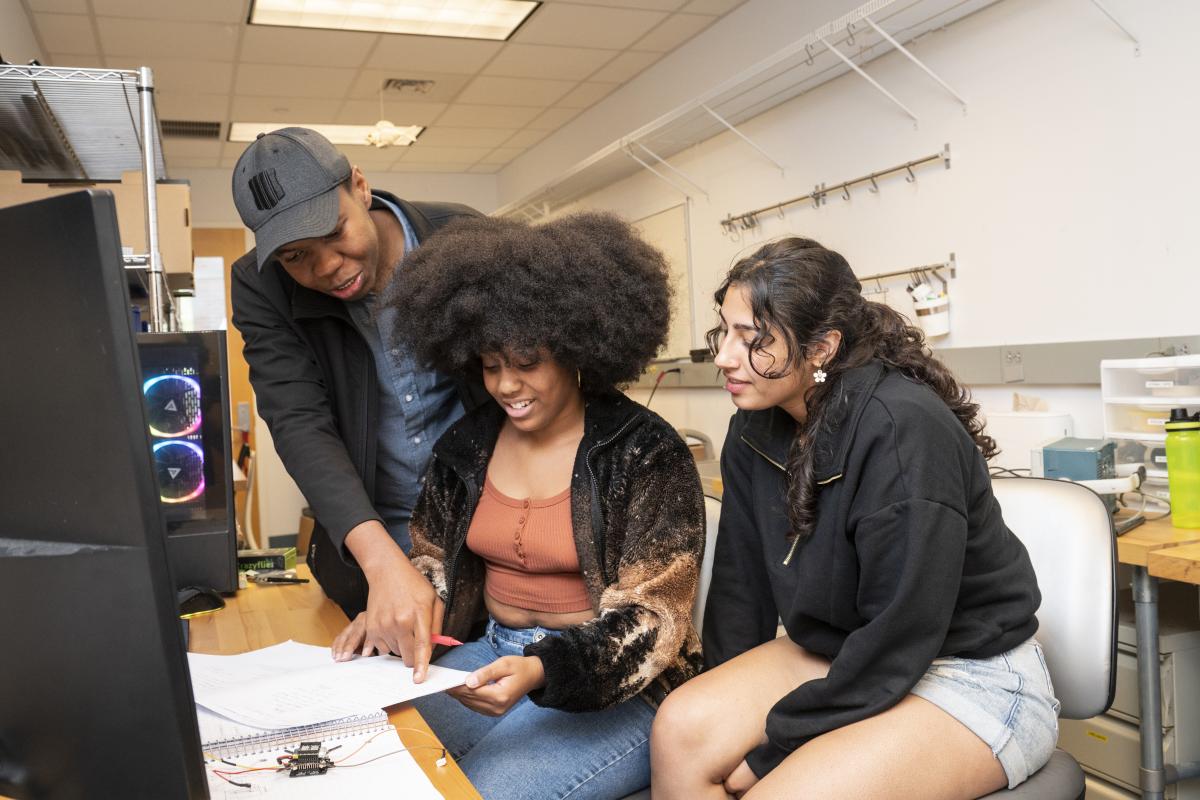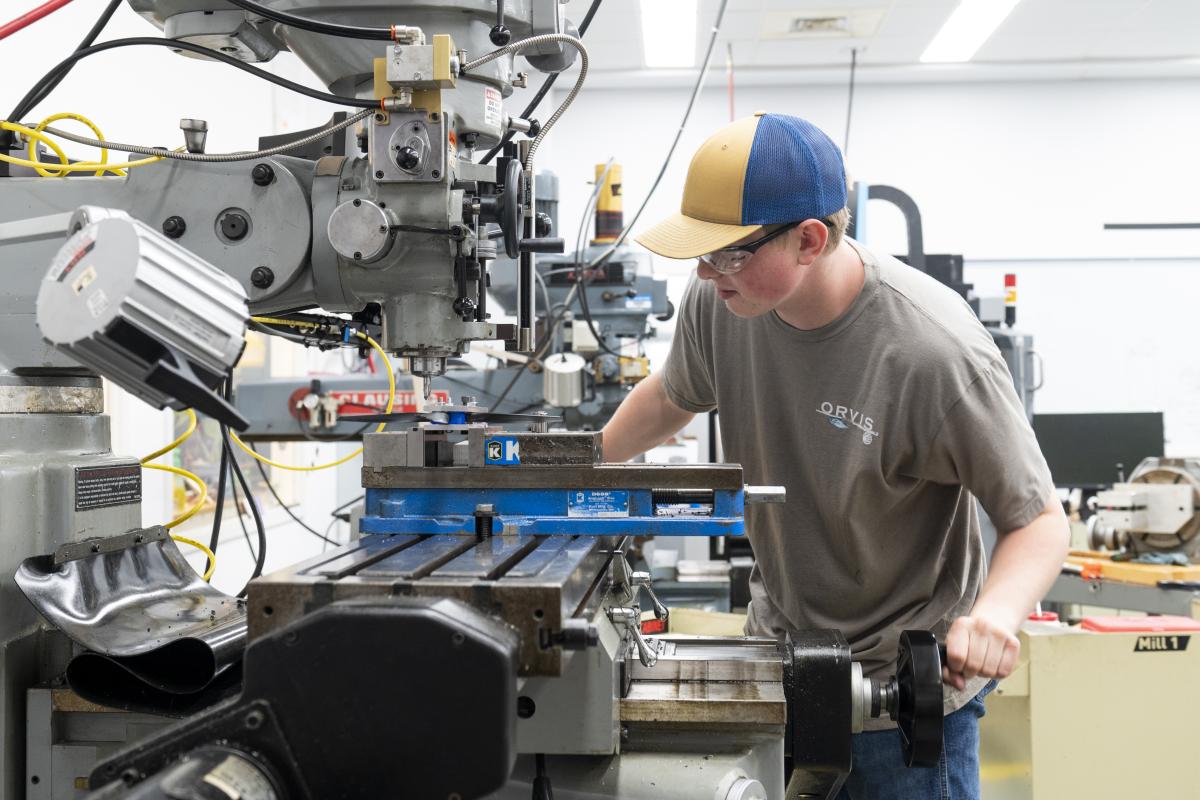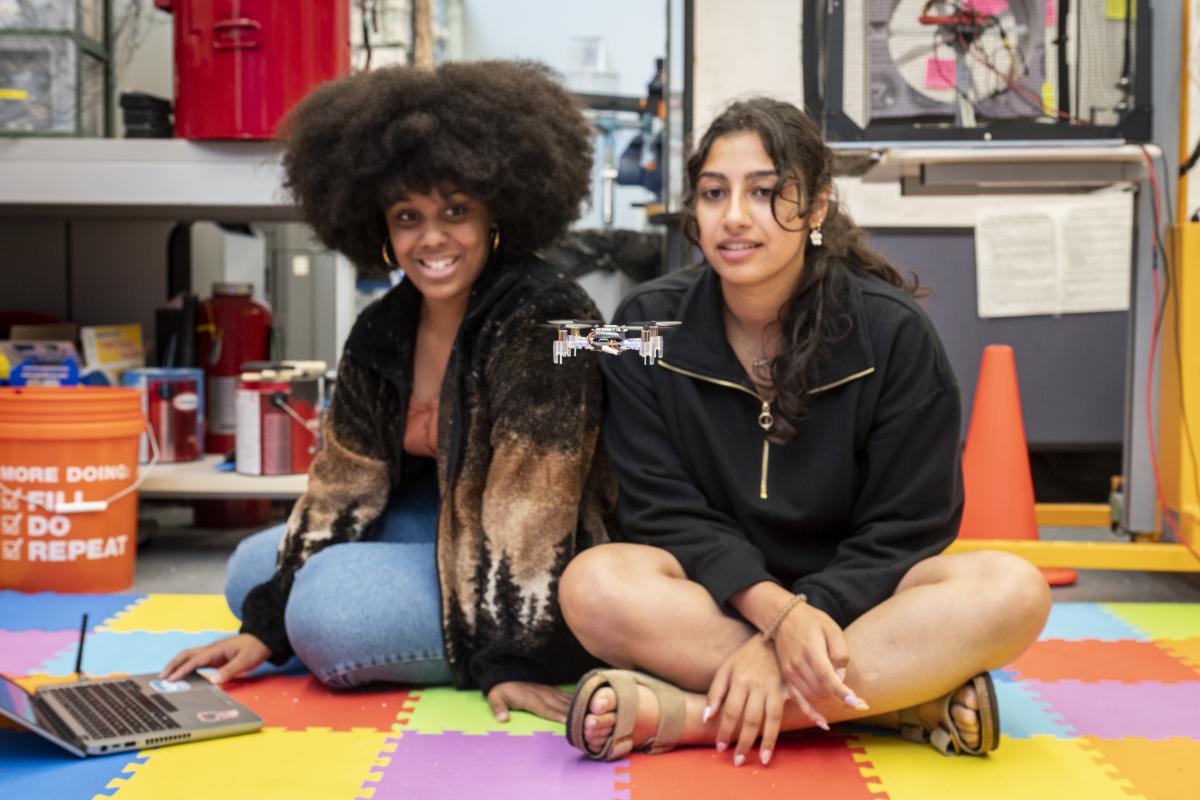STORY: Students Developing Better Drones for Warehouse Fulfillment
October 5, 2023
Over the summer, seven Olin students from Kenechukwu Mbanisi’s class collaborated on a robotics and software project for Hummingbird Systems, LLC.
Seven Olin students have spent their summer working full-time on a project with corporate partner Hummingbird Systems, LLC to build advanced drones to help maximize efficiency during the warehouse fulfillment process.
“The current technology in fulfillment warehouses relies on human beings to pick up products and ground-based robotics on wheels to help carry loads to the fulfillment area,” says Kenechukwu Mbanisi, assistant professor of robotics engineering and faculty advisor for the project. “Shelving only goes as high as people can safely reach, which means that warehouse space is being heavily underutilized. We’re working with Hummingbird to explore how we can build flying drones with a picking mechanism that can lift and fly products over to fulfillment to make better use of vertical space and improve efficiency.”

Students working on summer research project for Hummingbird Systems, LLC. Pictured from left to right: Assistant professor of robotics engineering Kenechukwu Mbanisi and students Gabby Blake ’24 and Prisha Bhatia ’26.
The project began last summer when Hummingbird Systems worked with David Barrett, professor of mechanical engineering, and another student team on hardware prototypes. Over this past summer, seven students working with Mbanisi—Gabby Blake ’24, Anagha Babu ’26, Prisha Bhatia ’26, Solomiia Kachur ’26, Sohum Kothavade ’26, Noah Rand ’26, and Lauren Thorbecke ’25—have continued this work.
Together, the students are developing a picking component and testing it on custom-designed flight vehicles, first in a simulated environment and then in a mock warehouse in Olin’s Large Project Building (LPB). In addition to the hardware, the students have also been working on software to coordinate safely flying multiple drones at once in a space filled with obstacles, including people, shelves, and other robots.
“Drones have the ability to quickly move around—they can go up really high and they’re not constrained by aisles like people are,” says Kothavade. “We’re working on a system where autonomous drones and people can work together and take advantage of their respective strengths.”

Noah Rand ’26 using machining part for drone.
“The code we write is tested in a simulation, which looks exactly like the mock warehouse in the LPB, because we’d rather have things crash in a virtual environment than in real life,” says Blake. “Using a Software-in-the-Loop approach and the exact same sensors and cameras that are on the real drones, we make sure we have the physics of flying correct so that everything is as safe and efficient as possible before we try it on the real drones.”
For many of the students, working on this drone project over the summer represented an ideal way to build skills and get hands-on experience in different fields.
“I plan on majoring in both robotics and mechanical engineering, and I think it’s important for engineers to be versatile and have a broad understanding of different aspects of the industry,” says Rand. “I’ve learned a lot about design thinking, machining practices, and how to improve your initial ideas from both efficiency and engineering perspectives.”

Students testing the Hummingbird Systems drone in the classroom.
“I learned a lot more this summer than I even thought I would,” says Blake. “This project has built my confidence as an engineer and how it’s okay to ask questions and approach things with intention. I feel like my work has been helpful in meeting my overall learning goals, not just my class goals.”
“Through this project work the students learned how to break down a complex problem statement into actionable components,” says Mbanisi. “They also learned how to exchange ideas and communicate their work with external partners; this is a very rich experience for rising sophomores when you consider that at many other institutions, students only get to work with external partners in their senior capstone projects.”
At the end of the summer, the students staged a demonstration of the drone in simulation for Hummingbird Systems, as well as showed them parts of the picking mechanism. The corporate sponsors were very pleased with the team’s progress.
“From day one, the Olin teaching team and, in particular, the students added value and delivered incredible insight towards solving complex, real-world technical challenges from both a hardware and software design perspective,” says Nick Saunders, CEO of Hummingbird Systems, LLC.
“The corresponding results were both timely and important in helping Hummingbird push through and ultimately eliminate potential ‘show-stoppers’ to the system’s success. Love this program and its approach to assisting businesses as they solve hard problems."
Work will continue on this drone technology—along with many other projects—in Mbanisi’s “Robotics System Integration” class this fall.